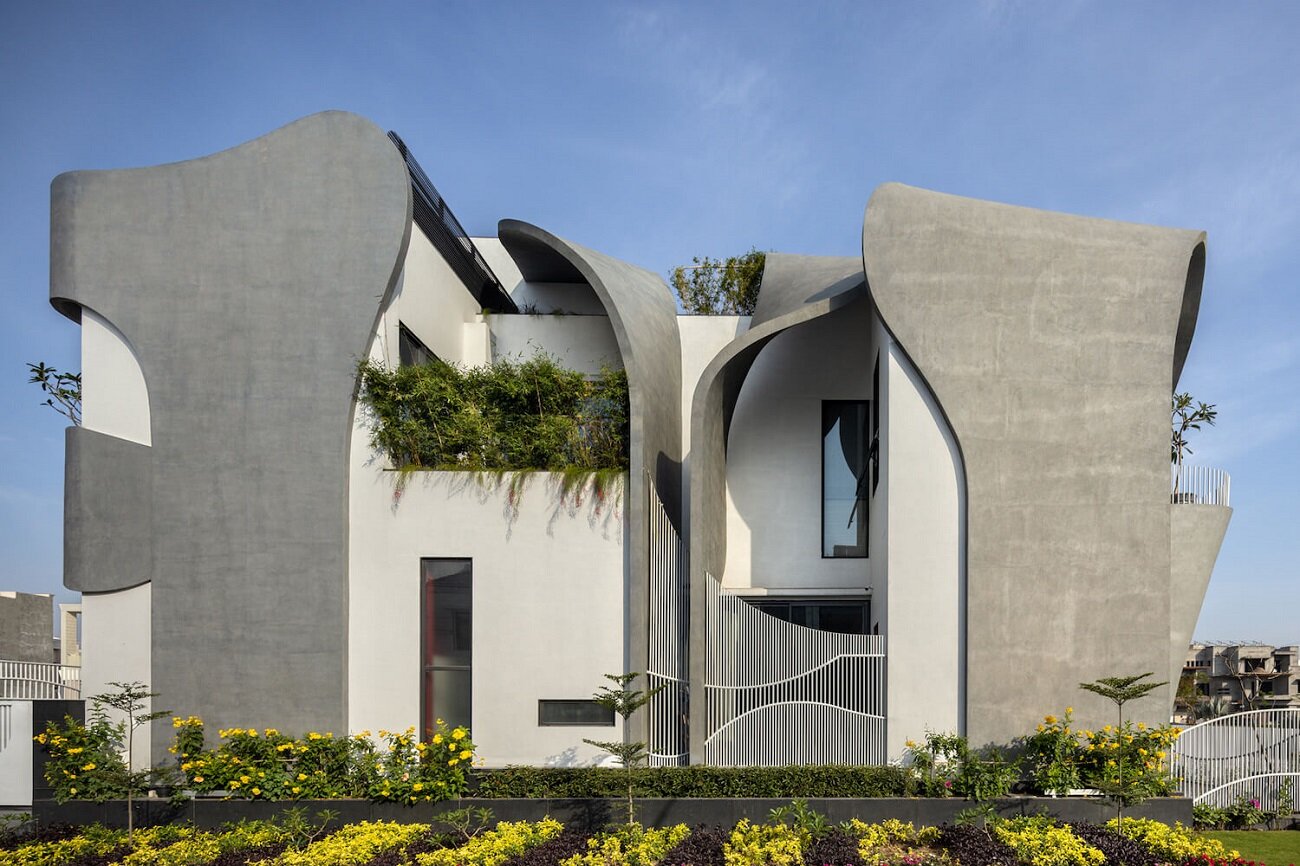#17473. Sculptural facade with dynamic concrete sails and integrated landscaping

This expressive architectural object represents a vivid example of modern organic design with elements of a sculptural approach to facade formation. The building is characterized by a dynamic composition of massive curved concrete elements that seem to envelop the main volume of the structure. These bold curvilinear forms create a dramatic visual effect and give the building a unique identity.
The facade is designed in a minimalist color scheme – predominantly gray and white, which allows one to focus on the plasticity of forms and the interplay of light and shadow. Particularly noteworthy are the tall vertical concrete "sails" framing the building – they not only serve an aesthetic function but likely also provide sun protection and create partial privacy.
The integration of greenery into the facade structure deserves special attention: plants are placed at different levels of the building, including an impressive "green shelf" on the second floor and neat flower beds with bright yellow flowers at the base. This not only softens the brutality of concrete surfaces but also demonstrates an ecological approach to facade design.
Of particular interest is the work with openings and transitions between different planes. The vertical elements of the barriers and elegant metal railings contrast with the massiveness of the main structures, adding lightness and rhythmic structure to the facade. The building demonstrates how complex geometry can be used to create a unique appearance even with a limited palette of materials.
For private housing, one can borrow from this project the idea of working with curvilinear facade elements, the contrasting combination of massive and lightweight structures, as well as the effective use of greenery to soften rigid architectural forms. Even on a smaller scale, such techniques can give individuality to a private home and make it an architectural statement.